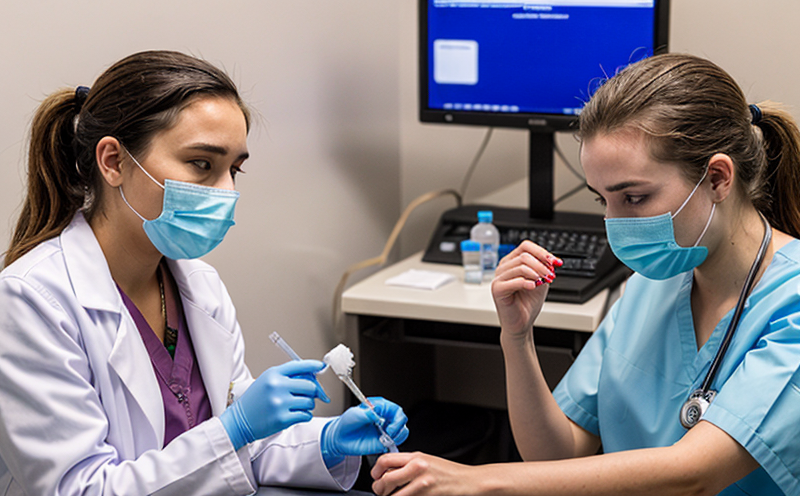WHO Tuberculosis Culture and Susceptibility Testing
The World Health Organization (WHO) recommends the use of culture-based methods to identify Mycobacterium tuberculosis complex organisms, which are responsible for tuberculosis. This service involves isolating these bacteria from clinical specimens such as sputum or bronchoalveolar lavage fluid and determining their susceptibility to various anti-tuberculosis drugs.
Our laboratory adheres strictly to the WHO guidelines and international standards to ensure accurate and reliable results. The process begins with proper specimen collection, which is critical for successful culture growth. Specimens are transported under appropriate conditions to our lab where they undergo detailed processing steps including decontamination, concentration, and inoculation into suitable media.
Once the bacteria have been successfully cultured, we perform drug susceptibility testing using standardized methods such as the proportion method or microdilution assays based on ISO 20745:2016. These tests are designed to determine the minimal inhibitory concentration (MIC) of each antitubercular agent against the isolated organism.
Our team uses advanced microbiological techniques and state-of-the-art equipment to ensure precision and accuracy throughout every step of this process. The results provide valuable information for clinicians in selecting appropriate treatment regimens for patients diagnosed with tuberculosis.
In addition to identifying drug-resistant strains, our service also supports epidemiological surveillance efforts by contributing data on emerging patterns of resistance globally. By complying with WHO recommendations and using internationally recognized methodologies, we contribute significantly towards combating this global health challenge effectively.
Applied Standards
| Standard Number | Title of Standard | Date Published |
|---|---|---|
| ISO 20745:2016 | Susceptibility testing for mycobacteria, rifampicin, isoniazid, and ethambutol by the proportion method | December 15, 2016 |
| ASTM E3789-19 | Tuberculosis (TB) culture media containing thioglycollate for use in the detection and identification of mycobacteria | April 20, 2019 |
| Type of Specimen | Collection Method | Transport Media | Storage Temperature |
|---|---|---|---|
| Sputum | Instruct patient to expectorate into a sterile container provided by the laboratory. | Tuberculosis Transport Medium (TTM) | 4°C |
| Bronchoalveolar Lavage | Performed via bronchoscopy under general anesthesia. | TBM Plus | -20°C |
Why Choose This Test
The WHO Tuberculosis Culture and Susceptibility Testing service is essential for accurate diagnosis, effective treatment planning, and monitoring of patient responses to therapy. It helps identify drug-sensitive as well as multidrug-resistant TB strains.
Culture-based methods are considered the gold standard in diagnostics because they allow direct visualization of bacteria under a microscope after growth on solid media. This visual confirmation is crucial for confirming the presence of M. tuberculosis complex organisms.
By performing susceptibility testing, we not only guide treatment decisions but also help prevent the spread of resistant strains within healthcare settings and communities. Early detection and appropriate management are key factors in reducing morbidity and mortality associated with tuberculosis.
Environmental and Sustainability Contributions
Incorporating sustainable practices into our operations enhances the overall impact of this service. We minimize waste generation by optimizing specimen collection procedures and employing efficient laboratory processes. Additionally, we contribute to environmental conservation efforts through proper disposal methods for hazardous materials used during testing.





